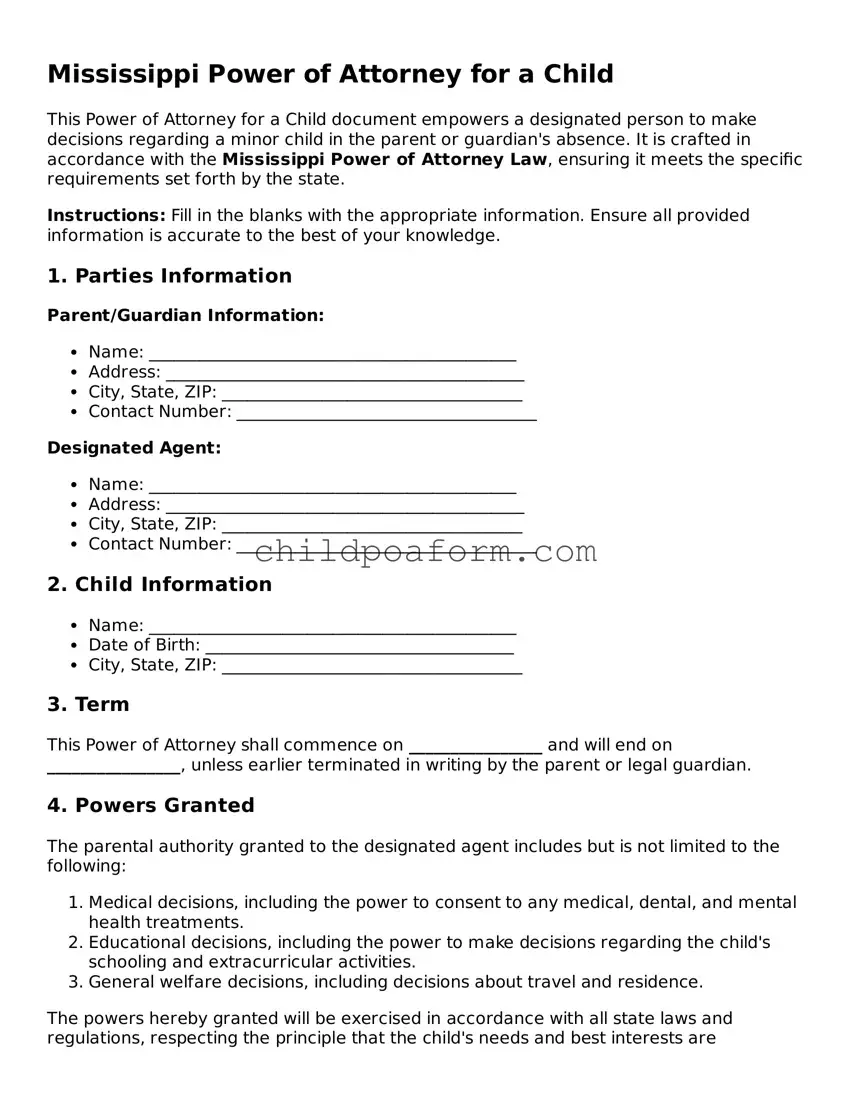Instructions on Utilizing Mississippi Power of Attorney for a Child
When you need to grant someone the authority to make legal decisions for a child in your care in Mississippi, you'll find yourself completing a Power of Attorney for a Child form. This document, essential for ensuring that the child's needs are met in the absence of their primary guardians, requires precision and an understanding of the details it demands. Below, a step-by-step breakdown will guide you through filling out this form accurately, ensuring that the process is completed smoothly and effectively. The steps aim to simplify this process, providing clarity and guidance on how to delegate the responsibility of caring for a child, within legal parameters. It's crucial during this process to consult with all parties involved and consider the best interests of the child.
- Gather all necessary information, including the full legal names and addresses of the granting party, the agent, and the child involved.
- Locate the official Mississippi Power of Attorney for a Child form. This may require contacting a local family law attorney or searching online for a reliable source.
- Start by filling in the date the document is being executed at the top of the form.
- Enter the full legal name and address of the parent(s) or legal guardian(s) granting the power in the designated section.
- Input the full legal name and address of the agent (the individual who will be granted power of attorney) in the appropriate area on the form.
- Specify the full name of the child, along with their date of birth, in the section dedicated to identifying who the document concerns.
- Detail the specific powers being granted to the agent. This involves describing what decisions the agent is authorized to make on behalf of the child, such as decisions regarding education, healthcare, and general welfare.
- If the power of attorney has a set duration, clearly state the start and end dates. If it does not have a specified duration, this should also be noted accordingly.
- Review the form with all parties involved to ensure accuracy and understanding of the powers being granted.
- Have the granting party or parties sign and date the form in the presence of a notary public to authenticate it.
- The agent should also sign the form, acknowledging their acceptance of the responsibilities being delegated to them.
- Finally, ensure the document is notarized. This usually involves signing it in front of a notary public, who will then also sign and seal the document, officially validating its authenticity.
Following these steps will ensure that the Power of Attorney for a Child form is filled out accurately and is legally binding. It's an important step in safeguarding a child's welfare, making clear who has the authority to make decisions in the absence or unavailability of the parent or legal guardian. Keep in mind, this form does not permanently transfer parental rights but temporarily delegates decision-making power for the child's benefit.
